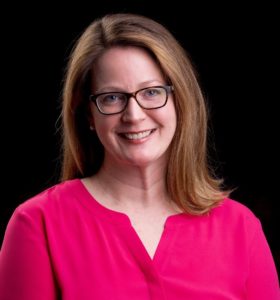In Microblog #116, we showcased the Austin Alley Flat Initiative’s recent progress in expanding accessory dwelling units (ADUs) in Texas’s hippest city. Several communities in Virginia currently have ADU programs in place, but interest and production has been modest so far. To help rub off some of that magic here in Virginia, we hosted a webinar to dig into ADU design and policy, with a focus on capacity building and implementation.
Participants included Michelle Winters, Executive Director at the Alliance for Housing Solutions and HousingForward Virginia board member; Max Pastore, an urban designer at Rhodeside & Harwell; Dr. Christina Stacy at the Urban Institute; and Nicole Joslin at Austin’s Community Powered Workshop, an organization that helped launch the Alley Flat Initiative.
Watch the full webinar below, or click here to view it on YouTube.
Presentation Slides Downloads
More resources
Additional Q&A’s
In addition to preemption of local zoning authority and building code matters, what other roles — if any — have you seen states take to address ADUs? Are there other opportunities for states to catalyze this type of development in a more productive and equitable way?
Max Pastore: While still somewhat preemptive, California and Oregon have probably made the biggest steps towards making ADUs more feasible/equitable at the state level. In particular, California’s recent ADU legislation (SB 13, AB 811, AB 671, AB 670, AB 587, AB 68) has effectively mandated that all municipalities allow by-right ADUs and have voided any existing local legislation/standards that overly restrict ADU design/installation. In fact, California now permits one ADU and one “junior accessory dwelling unit” (a converted bedroom within an existing house with an “efficiency kitchen” and an exterior door to an existing bathroom) on one single family lot. This legislation has really kickstarted the detached ADU start-up industry in LA and the Bay Area. This also allows for streamlined building inspections in off-site warehouses for modular construction.
Is there a difference between manufactured and modular? can this be expanded on due to fear associated with manufactured homes?
Max Pastore: I can’t speak to Virginia, but DC and Montgomery County MD typically define “manufactured” as trailer homes or impermanent structures that don’t follow typical residential building codes. It’s my understanding that DC considers “modular” homes to be permanent structures that follow typical residential codes but are built off-site in a warehouse with minimal on-site assembly. While DC treats modular housing the same as traditional construction for building inspections, I think Arlington consolidates the inspection process for modular construction…
Michelle Winters: The folks at HousingForward Virginia can probably expand on this…but in general yes, I believe modular homes are more likely to be allowed due to zoning restrictions that sometimes prohibit manufactured homes. See Modular vs. Manufactured Homes
Jonathan Knopf (HousingForward Virginia): Manufactured homes are completely constructed in a factory setting. They are then transported to the site, placed and affixed to a permanent foundation, and connected to utilities. They are very rarely ever moved again. They are built according to federal construction codes from Housing and Urban Development (HUD) and promulgated by DHCD here in Virginia. Prior to 1976, HUD had no regulations for manufactured homes—units built prior to this date are the “mobile” and “trailer” homes we stereotypically think of.
Modular homes are also built in factories, but are instead governed by local/state building codes. Workers build large components (e.g., wall sections) in controlled settings, which are then transported and assembled at the home site. For this reason, modular homes offer greater design and size options, but at higher cost than wholly manufactured homes.
Will VHDA offer mortgages where new homes have new ADU’s built at the same time?
Michelle Winters: We have seen several local homebuilders start adding a basement or detached ADU as an option for new homes. As long as the income from these units are not being used for qualifying for the mortgage, they *should* qualify for typical mortgage financing since single-family mortgages generally cover homes with 1-4 units. I have reached out to Freddie Mac and hope to have a conversation soon to help clarify what their rules are as well.
We struggle from overcrowding in Prince William County, which is already considered “affordable” in the DC metro area. We will be bringing forward ADU policies in the next few months for Board consideration. We expect community opposition due to overcrowding issues in some areas of the County. What would you say, or have you said to elected officials and opponents, to the concerns that ADUs will contribute to overcrowding and not provide some relief/solution to overcrowding?
Max Pastore: I’m defining “overcrowding” as a residential unit whose occupant density greatly exceeds the number of legal bedrooms. I think overcrowding is typically the result of a housing shortage or a housing market with an inadequate variety of unit types. In that situation, larger units get informally subdivided to reduce rents/costs per occupant. ADUs and other forms of missing middle housing (like duplexes) can help reduce overcrowding by adding more units and unit variety in a neighborhood. Related to the COVID-19 pandemic, ADUs can help minimize virus spread by reducing the number of occupants in shared spaces and allowing for self-isolation for high-risk individuals.
Michelle Winters: Agree with Max, the overcrowding is a symptom of both inadequate supply and lack of affordability, both of which are helped by increasing availability of housing like ADUs. I will say that in 2008 when we considered our first ordinance in Arlington this was a frequent concern among detractors, and it was one of the reasons that some of the more strict requirements were put in place that were eventually removed once people realized it wasn’t actually causing a problem.
What considerations, if any, are given for additional impervious surface generated by the ADU’s and associated patios, decks, sidewalks, etc?
Max Pastore: I can only speak to DC’s requirements on this. DC’s Department of Energy and Environment (DOEE) has a separate permit review process for all new construction- this includes the construction of detached ADUs. The applicant is required to calculate the total square footage of any added impervious surfaces on the parcel and must pay impact fees relative to that calculated square footage. Also, DC will deny an ADU permit if the project exceeds a certain impervious surface percentage on the parcel. Unfortunately, DOEE’s impact fees are assigned in tiers that mainly pertain to large scale development. For ADU construction, that might mean that an applicant is paying the same impact fee as a developer building a single family house or duplex.
Michelle Winters: Arlington has lot coverage limits that are the same for whatever type of home(s) are on the lot, so if you add an ADU you are still subject to the same rules. This has made adding an external ADU infeasible for some homes that are already near the maximum lot coverage. Some people believe that lot coverage allowances should be increased for detached ADUs, but this has not yet been addressed by policymakers.
How are ADU’s impacting re-sales? Have you seen instances where resale values are impacted (either positively or negatively) due to the ADU?
Michelle WInters: It is generally believed that ADUs will add value to a home for a number of reasons: additional square footage in cases where it is done as an addition or detached; additional bedrooms and bathrooms added to a property; the additional income potential; and added flexibility for owners.
Can you provide a link to the materials Freddie Mac financing study?
Michelle WInters: I’m also talking with Freddie Mac in the next few days so I can provide an update on their plans.
Are there any stand out challenges to ADUs in historic districts – ie. Old Town Alexandria or the Fan District in Richmond?
Max Pastore: Again, I can only speak to DC on this. DC’s ADU legislation was designed with historic districts in mind. In many cases, DC’s historic districts don’t include many single family residential neighborhoods because they’ve been mixed-use or multifamily neighborhoods from the start. In those areas (like Capitol Hill), ADUs aren’t ADUs anymore- they’re multifamily housing (i.e. alley houses, walk-ups, English basements, etc.). In the few DC historic districts that include single family zoning, ADU applicants must go through the same reviews with the Historic Preservation Review Board as any other construction project. Similar to Capitol Hill, I imagine that an ADU or a second living quarters is equally consistent with Old Town Alexandria’s architectural tradition.
Michelle Winters: In Arlington ADUs are not currently allowed in attached homes such as townhomes, so depending on how the jurisdiction creates its ordinance this may not be something that impacts many historic areas with lots of attached housing. Every historic district has its own rules for what can be done with regard to new construction and renovation so the answer would probably depend on whether these are addressed in the current design guidelines or if they would need to be updated to address ADUs.
Panelist Bios
Michelle Winters

Executive Director, Alliance for Housing Solutions
Michelle Winters is Executive Director of the Alliance for Housing Solutions, a nonprofit organization that is working to increase the supply of affordable housing in Arlington and Northern Virginia through public education, policy development, advocacy and innovation. Prior to joining AHS, Michelle worked for two decades at the national level on housing finance, policy, and capacity building initiatives, most recently as Senior Visiting Fellow for Housing at the Urban Land Institute.
She previously worked at NeighborWorks America, LISC, and Fannie Mae and started off her career in housing at the Urban Institute. Michelle has served as a member and chair of Arlington’s Housing Commission and currently serves on the boards of HousingForward Virginia and the Lee Highway Alliance and as co-chair of ULI Washington’s Housing Initiative Council. She received her BA in Urban Affairs from Virginia Tech and her Master in City Planning from MIT.
Max Pastore

Senior Associate Urban Planner & Urban Designer, RHI
Max Pastore is a Senior Associate Urban Designer and Urban Planner at RHI, a landscape architecture, urban design, and urban planning firm based in Old Town Alexandria. At RHI, Max strives to reimagine urban and suburban areas by designing dynamic, resilient, and human-centered places.
At RHI, Max works on urban design master plans, building design guidelines, as well as streetscape standards throughout the Mid-Atlantic. Some of his recent local projects include urban design concepts and guidelines for Fairfax County’s Richmond Highway bus rapid transit station areas, updated streetscape standards for downtown Silver Spring, Maryland, and conceptual streetscape alternatives for DC’s Pennsylvania Avenue, west of the White House.
As a side project, in 2019, Max began developing a detached accessory dwelling unit (ADU) in his DC backyard for his retired father. The process of designing the unit, obtaining building permits, and managing contractors and finances fundamentally reframed his approach to urban planning and design.
Max is committed to evolving DC and the nation’s land use to facilitate more accessible and flexible housing outcomes for everyone.
Christina Stacy, PhD

Senior Research Associate, Metropolitan Housing and Communities Policy Center, Urban Institute
Dr. Christina Stacy is a senior research associate in the Metropolitan Housing and Communities Policy Center at the Urban Institute, where she specializes in urban economics and inclusion. Her work focuses on the intersection of economics and urban spaces and how housing, local economies, health, and crime interact. She is currently working with the City of Alexandria to design and implement an ADU policy and associated regulations in Alexandria. She is also studying whether and how local zoning reforms can increase the supply of housing throughout the country.
Nicole Joslin
Executive Director, Community Powered Workshop

Nicole has a diverse professional and academic background in architecture, development, disaster recovery, and community engaged-design. After working for Architecture for Humanity’s Hurricane Katrina recovery program in Biloxi, MS, Nicole moved to Austin and co-founded Women.Design.Build to provide more opportunities for women to engage in community driven design and construction activities. She concurrently practiced at architecture firm BOKA Powell and received her architectural license in 2012. Nicole’s experience contributed to her research on the role of community organizations in disaster preparedness and recovery in the Community and Regional Planning graduate program at the University of Texas. Nicole returned to the Gulf Coast in 2014 for a research fellowship at architecture and planning firm Eskew+Dumez+Ripple in New Orleans, LA investigating community engagement frameworks in professional design practice. These experiences inform Nicole’s current role as the Executive Director of Community Powered Workshop, formerly ACDDC, and visiting researcher at the University of Texas School of Architecture.